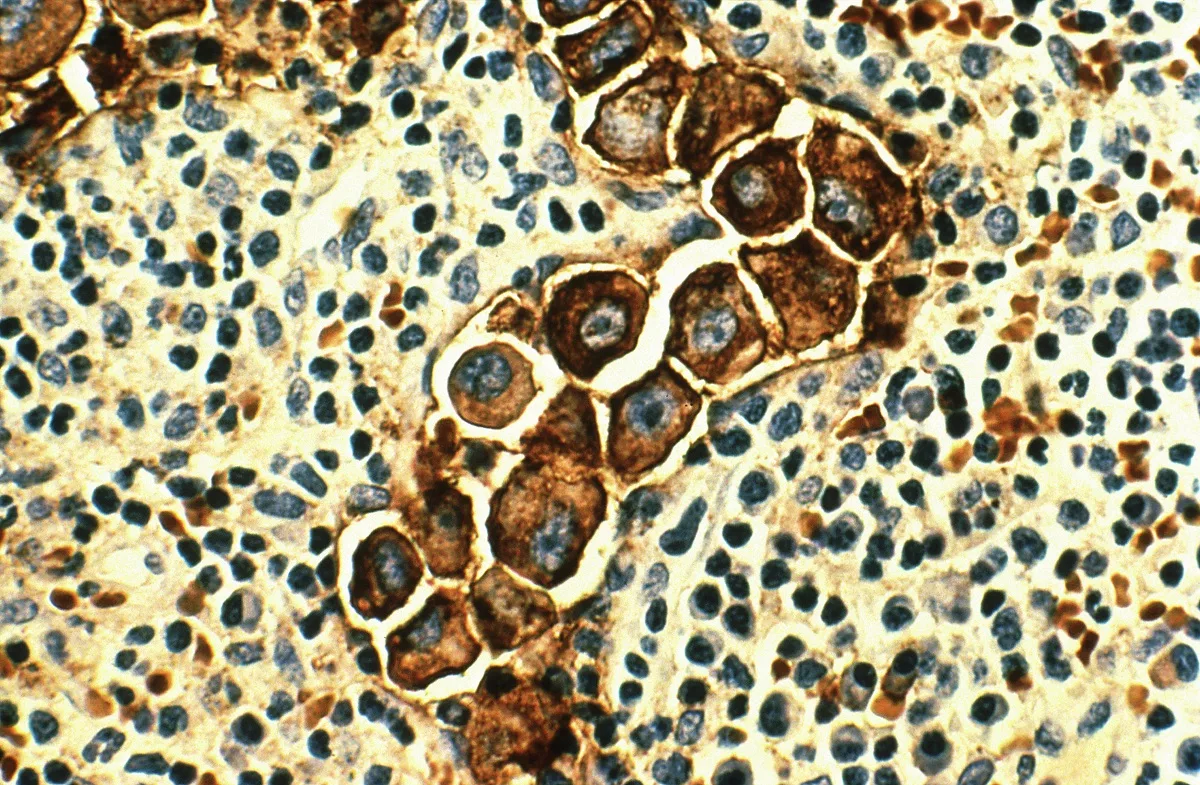A genetic disorder that causes specific cells to reproduce too quickly is called tuberous sclerosis complex (TSC). When these abnormal cells become too numerous, they can form noncancerous tumors in any part of the body. If the tumor becomes large enough, it may put pressure on nearby healthy tissue and cause symptoms. The severity of the condition depends on the size and location of the tumor. While mild and moderate forms of the condition are treatable, in severe cases, it may lead to serious complications, including permanent damage.
Usually, this condition progresses slowly, and some symptoms may appear later in life. However, if you have this condition, you will need regular checkups for the rest of your life.
In general, TSC occurs rarely and affects about 50,000 people in the U.S. and approximately 1 million people in the entire world.
Symptoms
The symptoms depend on the exact location and size of the tumor. That’s why physicians have categorized the symptoms into 3 groups. For example, brain-related symptoms, skin-related symptoms, and changes elsewhere inside the body.
Brain-related Symptoms
The following symptoms often occur when the condition causes tumors or cortical tumors (hematomas) in the brain. Although these tumors are not cancerous (benign), they can negatively affect brain function. Check below some tumors and tubers that may cause symptoms:
- Subependymal giant cell astrocytoma (SEGA) – This type involves nodule-like growths on the brain’s surface. These growths often look like small fluid-filled pockets on the brain. Sometimes, these benign tumors may cause fluid buildup in the brain (hydrocephalus).
- Cortical tumors – In such cases, you can notice clusters of benign cells that develop inside the brain. In most cases, these clusters are slightly out of place or disorganized.
Furthermore, TSC may also cause other health problems, including developmental delays, mental disabilities, seizures, brain development-related disorders, including autism spectrum disorder, attention deficit/hyperactivity disorder (ADHD), and others. While mental health problems and seizures are common in people with TSC, it does not mean everyone who develops this genetic disorder will have them.
Skin-related Symptoms
The following symptoms are often the first signs of TSC. According to some research, about 90% of people with TSC experience at least one of the following symptoms. Check below some examples:
- Ash leaf spots – These occur in the areas of the skin with less Melanin (a pigment that gives the skin its color). Usually, these spots are difficult to identify, especially on people with lighter skin. Moreover, ash leaf spots glow under some types of ultraviolet (UV) light.
- Confetti marks – These marks look similar to freckles but are lighter than the skin around them. Usually, this symptom appears during early childhood.
- Facial fibromas – This symptom is a benign tumor that appears on the skin of the face. When you develop multiple and large fibromas, they can form a large structure called a plaque.
- Fingernail and toenail fibromas – In some cases, people may develop fibromas (similar to facial fibromas) around the edges of the fingernails or toenails. Commonly, these growths appear during puberty and grow for the rest of your life.
- Shagreen patches – This is another skin-related symptom that causes a fibrous tissue to build up underneath the epidermis (the outermost layer of the skin). In most cases, the benign tumors develop on the lower back and may have a texture similar to orange or grapefruit peels.
Other Symptoms
This category includes symptoms that may appear anywhere in the body except the brain and skin. Examples include:
- Changes in the mouth – Some people may develop mouth fibromas or pitting due to a lack of enamel on their teeth. Furthermore, almost everyone who develops TSC has enamel pitting.
- Growths or cysts in the kidneys – In such cases, tumors or cysts may negatively affect kidney function. The most common symptoms include lower back pain, bloody urine, and kidney stones. These growths and cysts may also increase the risk of developing kidney failure and renal cell carcinoma (a type of kidney cancer).
- Growths on the retinas or optic nerves – In rare cases, TSC may cause certain growths to develop on the eyes, which often cause vision problems.
- Cardiac rhabdomyomas (growths in the heart) – This type of growth is very dangerous for infants, but the risk decreases with age. If these tumors become large, they can interrupt blood flow through the heart.
- Tumors in the lungs – While it happens rarely, these growths can cause severe breathing problems.
Causes
This genetic disorder occurs due to DNA mutations. In normal circumstances, DNA holds instructions that tell cells when to grow, multiply, and die. However, a mutated DNA gives different instructions to cells, which causes them to grow and multiply without control. When these cells become too numerous, they form a mass called a tumor. Normally, the reproduction of cells is controlled by tumor-suppressing proteins. These proteins are responsible for how fast the cells reproduce, as well as their size. In general, the mutations that lead to TSC happen in two ways. For example:
- Sporadic – In such cases, DNA changes (mutations) occur randomly after conception. In other words, this is a new error that appears during pregnancy. Furthermore, this way is the most common cause of TSC.
- Inherited – Roughly 30% of all diagnosed TSC occur when children inherit the abnormal gene from their biological parents.
How to Prevent Tuberous Sclerosis?
Unfortunately, there is no sure way to prevent this condition because experts do not fully understand why it happens. However, you can perform genetic tests before pregnancy to check whether you have this abnormal gene or not. In addition, it is very important to understand the risks of having children with tuberous sclerosis.
Diagnosis
There are two categories of symptoms, including minor and major features. Doctors often confirm TSC when the patient has at least 2 major features. Sometimes, they can categorize the diagnosis as “possible TSC” because symptoms usually appear over time.
Minor Features
- Confetti skin lesions
- Two or more growths in the mouth
- Growths on the retina
- Kidney cysts
- Noncancerous tumors in other organs or parts of the body
- Four or more pits in the enamel on the teeth
Major Features
- 3 or more leaf spots with at least 5 millimeters at their widest point
- At least two facial fibromas or a fibroma plaque, one fingernail or toenail fibroma, or one Shagreen patch
- Some types of growth in or on the brain, retinas, or in the heart
- Benign tumors that negatively affect the lungs, kidneys, or lymph nodes
Tests
Generally, multiple tests are available to identify cysts, growths, and tumors. While some tests are listed below, the only test that can confirm TSC is a genetic test. It helps identify mutations in the TSC genes.
Tests for Brain-related Symptoms
If you experience symptoms that indicate growths in or on the brain, doctors often perform the following tests. For example:
- A CT (computed tomography) scan
- An MRI (magnetic resonance imaging) scan
- Electroencephalogram (EEG)
When physicians suspect intellectual disabilities, they can perform additional tests (such as cognitive tests) to get more clues about the disease.
Tests for Skin-related Symptoms
In such cases, doctors will perform a physical examination. It is an important part of identifying TSC. They may also perform some tests to confirm or exclude TSC. For example:
- Wood’s lamp examination – This is a noninvasive test that uses ultraviolet (UV) light to help identify ash leaf spots.
- Skin biopsy – During this procedure, physicians will take a small sample of affected tissue for testing under a microscope. It is done to check for abnormal cells.
However, a genetic test is the only way to confirm or rule out TSC. While approximately 75% to 95% of diagnosed TSC cases have a TSC1 or TSC2 mutation, in rare cases, it is not possible to identify the mutation.
Treatment
However, this condition cannot be cured. That’s why the treatment goal is to reduce the symptoms and improve your quality of life. Therefore, doctors usually prescribe medicines, surgery, and dermatology treatments.
Medicines
Healthcare professionals usually prescribe medications depending on the symptoms. They often recommend medicines to slow or stop tumor growth, shrink tumors, prevent seizures, and for other symptoms.
Surgery
This treatment is often recommended when a tumor puts pressure on structures or organs in the body and causes symptoms. During this procedure, surgeons will remove the tumor and a small amount of healthy tissue that surrounds it.
Dermatology Treatments
There are a lot of TSC symptoms that can be seen on the skin. Therefore, some people may feel embarrassed or ashamed. Dermatologists may help reduce or remove these skin symptoms. Check below some treatments:
- Cryoablation
- Dermabrasion or dermaplaning
- Skin grafts
- Excision (a small cut in the skin similar to mole removal)
- Laser skin resurfacing
Frequently Asked Questions
How long does tuberous sclerosis last?
This is a lifelong condition that cannot be cured. However, there are multiple treatments that may reduce the symptoms and improve your quality of life.
When should I go to the ER?
Immediately call 911 or go to the nearest emergency room (ER) if you experience status epilepticus (SE). This condition causes seizures that last about 5 minutes. In general, this is a life-threatening condition that requires immediate treatment.
What is the life expectancy of someone with tuberous sclerosis?
While most people with TSC have a normal lifespan, if they develop kidney or brain complications, it may lead to severe symptoms and complications, especially without treatment. Ask your healthcare professional if you have additional questions.




